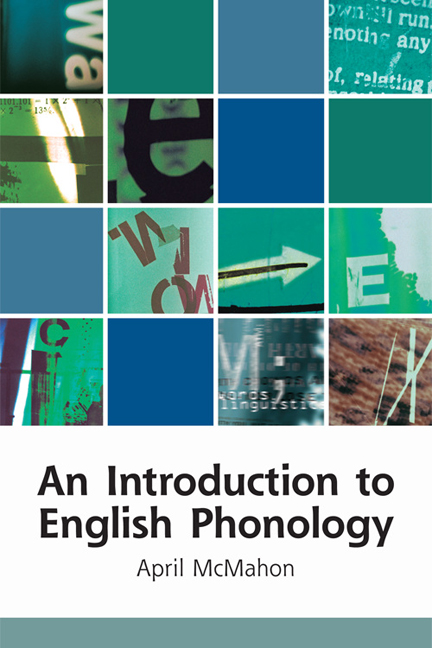Book contents
- Frontmatter
- Contents
- To colleagues
- 1 Sounds, spellings and symbols
- 2 The phoneme: the same but different
- 3 Describing English consonants
- 4 Defining distributions: consonant allophones
- 5 Criteria for contrast: the phoneme system
- 6 Describing vowels
- 7 Vowel phonemes
- 8 Variation between accents
- 9 Syllables
- 10 The word and above
- Discussion of the exercises
- References
- Index
4 - Defining distributions: consonant allophones
Published online by Cambridge University Press: 13 October 2018
- Frontmatter
- Contents
- To colleagues
- 1 Sounds, spellings and symbols
- 2 The phoneme: the same but different
- 3 Describing English consonants
- 4 Defining distributions: consonant allophones
- 5 Criteria for contrast: the phoneme system
- 6 Describing vowels
- 7 Vowel phonemes
- 8 Variation between accents
- 9 Syllables
- 10 The word and above
- Discussion of the exercises
- References
- Index
Summary
Phonemes revisited
As we saw in Chapter 3, the two major criteria for establishing phonemic contrast are predictability of occurrence, and invariance of meaning. That is to say, if we are dealing with two allophones of the same phoneme, the two must occur in non-overlapping sets of environments. Furthermore, there cannot be any minimal pairs, where substituting one of our focus sounds for the other in exactly the same context creates a difference in meaning. These two criteria establish conclusively that English [ɹ] and [l] belong to distinct phonemes: there are many minimal pairs, like rip and lip, rot and lot, marrow and mallow, so clearly the two phones occur in the same contexts; and substituting one for the other does create a meaning difference. On the other hand, clear, alveolar [l] and dark, velar [l] occur in predictably different environments: in Standard Southern British English, the clear, more front one appears word-initially or between vowels, as in lip, lot, mallow, and the dark, more back one word-finally or before a consonant, as in pill, tall, halt. Since there are no minimal pairs, and substituting one variant for the other will not make a meaning difference, [l] and [l] are necessarily allophones of a single phoneme, /l/.
Equipped with the articulatory descriptions from the last chapter, we can now progress to a more detailed account of the distribution of allophones. In doing so, we will also discover that certain phonemes form groups, in that they have similar allophones in similar environments. We must try to identify what members of such groups have in common, and what makes certain phonemes work together.
Making generalisations
In Chapter 2, several examples of allophonic variation were considered. In one case, we found that /k/ has two variant pronunciations, namely velar [k] in cupboard and palatal [c] in kitchen. Another involved /p/, /t/ and /k/, which have aspirated allophones, with a perceptible release of air, in pill, till and kill, but unaspirated allophones in spill, still and skill, or sip, sit and sick.
However, providing a list of words where the relevant allophone appears is only our starting point.
- Type
- Chapter
- Information
- An Introduction to English Phonology , pp. 36 - 51Publisher: Edinburgh University PressPrint publication year: 2016



